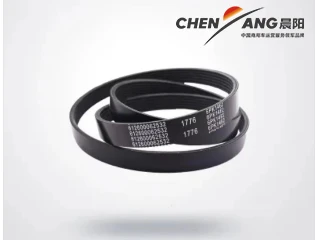Different Types of Crawler Excavators and Their Uses
Understanding Crawler Excavator Types
Crawler excavators are essential machines in the construction and mining industries, known for their versatility, stability, and ability to work in difficult terrain. Their design features a set of tracks instead of wheels, which allows them to distribute their weight evenly across the surface and maintain balance while performing various tasks. In this article, we will delve into the different types of crawler excavators, exploring their unique characteristics and applications.
1. Standard Crawler Excavators
Standard crawler excavators are the most commonly used type. They usually come with a rotating upper structure, known as the cab, which allows the operator to swing the boom and attachment in a 360-degree radius. These machines are equipped with digging buckets, enabling them to perform excavation tasks such as trenching, grading, and lifting. Standard excavators are widely used in general construction projects, road construction, and even in landscaping.
Zero-tail swing excavators are an innovative type of crawler excavator designed to enhance maneuverability in tight spaces. Unlike standard models, which may extend beyond their tracks when rotating, zero-tail swing machines have a counterweight that stays within the width of the tracks. This design minimizes the risk of collisions with nearby structures and is particularly useful in urban areas where space is limited. These excavators are ideal for tasks like utility installation in crowded environments or indoor excavation projects.
3. Long Reach Excavators
crawler excavator types

As the name suggests, long reach excavators are designed with an extended boom and arm, allowing them to excavate materials from a much greater distance compared to standard models. These machines are especially advantageous in applications such as dredging, where operators need to reach into water bodies without getting too close to the edge. Long reach excavators are also employed in demolition projects, allowing operators to safely dismantle structures from afar.
4. Mini Crawler Excavators
Mini crawler excavators are compact machines designed for smaller jobs and confined spaces. Despite their size, they are incredibly powerful and capable of a variety of tasks, including digging, lifting, and grading. Their lightweight and compact design make them suitable for residential projects, landscaping, and interior renovations. Mini excavators are often equipped with a variety of attachments, making them versatile tools for specific applications.
5. Heavy Duty Crawler Excavators
Heavy-duty crawler excavators are built for demanding tasks, particularly in the mining and quarrying sectors. These machines are equipped with robust components and powerful engines to handle extreme conditions and heavy materials. They often feature larger buckets and greater digging capacities, allowing them to move substantial amounts of earth efficiently. Heavy-duty excavators are crucial for operations that require deep excavation or large-scale material handling.
Conclusion
Ultimately, the choice of crawler excavator depends on the specific needs of a project. From the compact mini excavators to the robust heavy-duty types, each variant offers unique capabilities that make them suited for different tasks. Understanding the various types of crawler excavators equips contractors and operators with the knowledge needed to select the right machine for their operations, ensuring efficiency and effectiveness in achieving project goals. As technology continues to advance, we can expect even more specialized excavator models to emerge, further enhancing the possibilities in construction and excavation work.
-
SINOTRUK HOWO 84 Electric Dump Truck for Eco-Friendly Heavy HaulingNewsJul.26,2025
-
The Fast 16-Gear Manual Transmission Assembly for Heavy TrucksNewsJul.25,2025
-
Mercedes Benz Actros 1848 42 Tractor Truck for Sale - Reliable PerformanceNewsJul.24,2025
-
High-Quality Water Pump Assembly for Sinotruk Trucks – Durable & ReliableNewsJul.23,2025
-
Premium Truck Engine Antifreeze Coolant Fluid for Heavy Duty VehiclesNewsJul.22,2025
-
FOTON View G7 Mini Bus: Affordable & Spacious TransportNewsJul.22,2025
Popular products

























